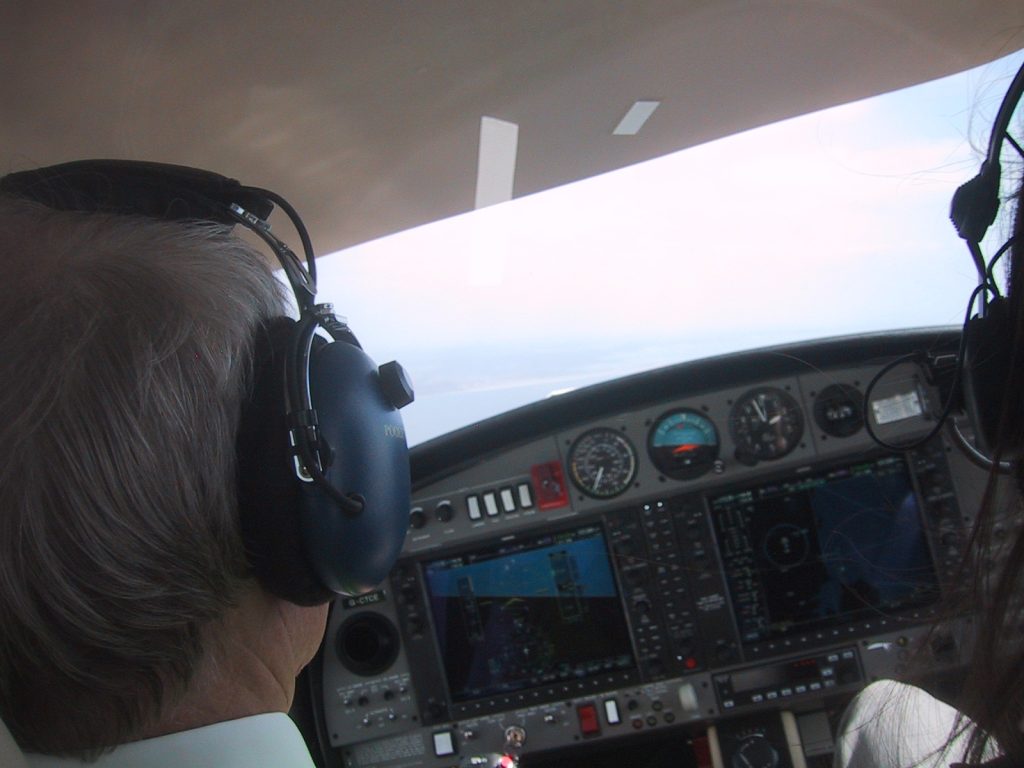Include threat and error management from the beginning of flight training.
For an activity peppered with so many potential hazards, aviation has achieved a remarkable safety level since its perilous early days, most especially when thinking about public transport (or ‘Commercial Air Transport’) operation in recent decades. Much of the progress in the safety arena has come not just from technological advances per se, but from an evolving understanding of how humans (air crews and other operators within the system) behave and how they interact with technologies, with the environment, and with each other.
This era of focus on human factors has spawned a number of behavioural and organisational models including Safety Management Systems (SMS) and Crew Resource Management (CRM). Emerging from these, the Threat and Error Management (TEM) concept has evolved as a practical valuable framework for enhancing air safety further still.
TEM is not just a ‘nice to have’ technique – it is mandated in ICAO and EASA training syllabi
The goal of TEM is to systematically respond to the threats and errors that occur during flight and to manage (that is, to plan, direct or control) the situation or operation during which they occur. TEM is not just a ‘nice to have’ technique – it is mandated in ICAO and EASA training syllabi from LAPL and PPL upwards, and is included as Standard Operating Procedure (SOP) in the operations of the majority of airlines and other commercial operators.
However, TEM is often paid scant regard during ab-initio training, especially when rushed or incomplete instruction minimises (or even overlooks) it in favour of the ‘hard’ skills of manipulating the controls, navigating, or performing the other specified manoeuvres which need to be completed in order to complete the training course.
This is regrettable, because TEM is a powerful tool in developing a safety-minded outlook and set of habitual behaviours among pilots (not to mention other participants in the air navigation system, such as air traffic controllers).
By postponing its introduction to later phases of training – if at all – instructors and students well may forego the benefits of primacy in learning and embedding desireable behaviours from the beginning.
But it is perhaps overlooked, or consciously omitted, possibly through not being fully understood by some instructors, or through a lack of confidence in explaining it or selecting examples, and therefore is left out of the ‘patter’ with which instructors customarily deliver training exercises.
Error was no longer a blameworthy event – it was a normal human characteristic
So what exactly is TEM? The model was born from the Line Operations Safety Audit (LOSA) concept, pioneered in a series of studies based on a collaboration between the University of Texas Human Factors Research Project (UT) and various airlines back in the 1990s. In auditing the qualities (or shortcomings) of CRM behaviours in the cockpit, the studies were extended to include recording errors on the flightdeck, how (or if) they were identified, and how they were dealt with by crews.
Implicit in this method of study was an acceptance that error is an everyday occurrence in flying – indeed in every human activity.
Relegated to the past was the notion that anything less than ideal performance should be sanctioned or punished. Error was no longer a blameworthy event – it was a normal human characteristic which was to be managed so as to reduce any attendant risk to as low a level as possible.
There are three key elements invoked in the TEM concept:
Threats:
These are events or errors that happen beyond the influence of crew, which increase operational complexity, and which must be managed to maintain the margins of safety.
Threats can be understood as coming from ‘outside’ the cockpit. In the context of PPL training operations, examples might include other airborne traffic in a busy training area; forecast or observed adverse weather conditions; or – less visibly – time pressures or other organisational shortcomings.
Errors:
Actions or inactions by crew that lead to deviations from organisational or operational intentions or expectations.
Errors can be understood as arising ‘inside’ the cockpit, as the result of choices, actions or omissions by crew. In the training context examples could include (among numerous others) misapplication of control inputs.
Undesired Aircraft States (UAS):
These are operational conditions where an unintended situation results in a reduction in margins of safety.
Undesired Aircraft States can often be considered the last stage before an incident or accident.
In training (or any other types or phases of flight), ‘Undesired Aircraft States’ might include an unusual attitude outside the normal operating range, an exceedance or reduction in speed outside permitted limits, or proximity (whether detected or not) to other aircraft at a distance that risks collision or a ‘near-miss’.
The goal of TEM is to detect and respond to these elements effectively by mitigating, eliminating or correcting them before they lead to a serious reduction in safety. A Threat and Error Management briefing should be included in the preparations for every training flight.
An example of how it might sound could be something like this:
“We are planning a flight to a busy airport where a mix of general aviation and public transport traffic is to be expected.
“This will increase the risk of mid-air collision or close proximity with other aircraft. Therefore we will focus on maintaining strong situational awareness through a disciplined look out, and by monitoring radio communications to give us the best picture of where other traffic is and what its intentions are.
“We will keep all non-essential communications between us in the cockpit to a minimum. Any questions?”
Instructors looking for guidance as to where and when they might include TEM dialogues into flight training exercises, can benefit from a very useful guide published by the Honourable Company of Air Pilots (HCAP), as part of their ‘EASA PPL(A) Instructor’s Lesson Guide’ (available on the web at www.airpilots.org).

A table of scenarios outlines various sample threats and errors, what consequences might ensue, and suggestions as to what countermeasures may be taken to mitigate, eliminate or capture the particular threat or error.
These can provide useful prompts to include in briefings. The table is preceded by a useful summary of the TEM concept, and includes an element of measuring risk reduction matched against a standard risk matrix.
The complete Lesson Guide is well worth consulting by any PPL instructor who is looking for inspiration when preparing and structuring long briefings, debriefs, and flight lessons themselves.
The notion of ‘Undesired Aircraft State’ does not just apply to unusual attitudes or hazardous energy states
In connection with Threat and Error Management specifically, it is also worth mentioning that the notion of ‘Undesired Aircraft State’ does not just apply to unusual attitudes or hazardous energy states, but can extend to ill-advised weather, traffic or terrain situations, where the aircraft (and the pilot) is in the ‘wrong place at the wrong time’ – any location in which the margins of safety are reduced and the potential for harm is on the increase, unless further action is taken.
As a tool with which to equip learner pilots with a pro-active safety mindset, TEM is extremely effective, and should be part of all student’s (and instructors’) practice from the beginning.







